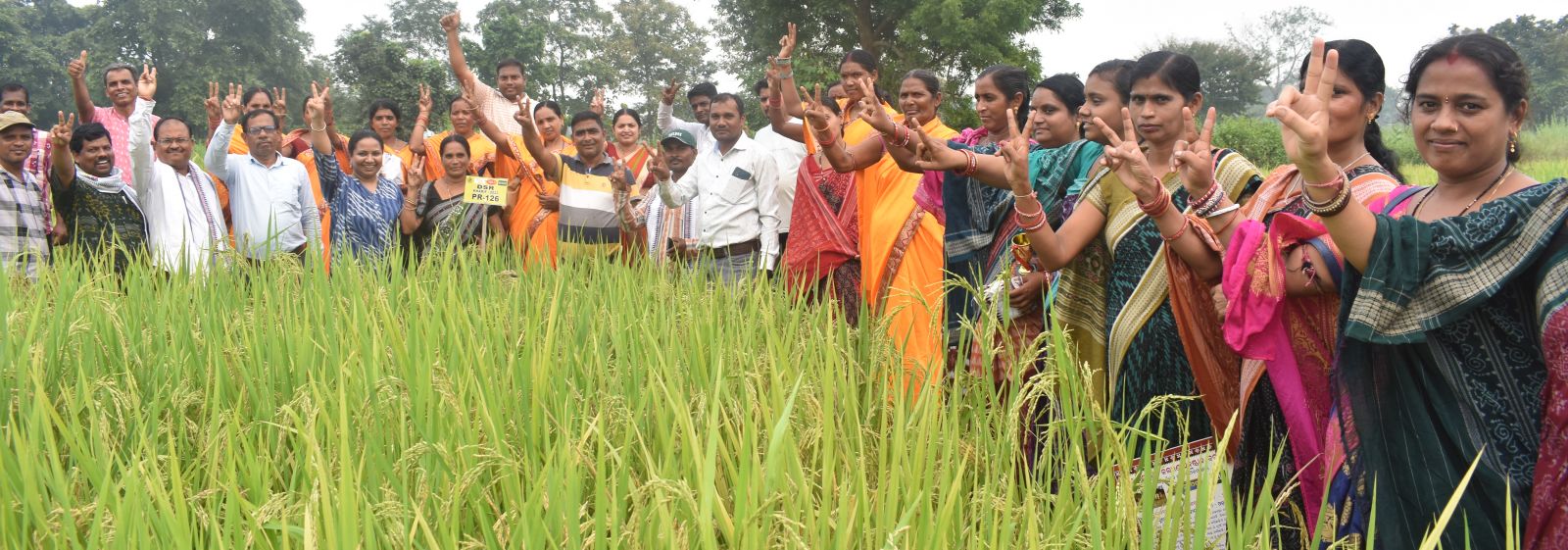The inroads of direct-seeded rice with the low-input responsive PR-126 variety (A case study from Odisha’s smallholder ecosystem)
- From
-
Published on
05.09.24
- Impact Area

Authors: Dillip Kumar Rout*, Sk Mosharaf Hossain*, Swati Nayak*, and Amaresh Chandel**
Rice is a crucial staple food for over 95% of Odisha’s population. This principal cereal bears immense significance culturally and economically. Bargarh District is known for its vast rice acreage and productivity. Rice is grown in about 235,000 (6.5% of total rice area) hectares every year. Compared to neighboring districts, irrigation is better in Bargarh and farmers tend to grow rice using traditional cultivation. This involves transplanting rice seedlings into puddled soil which requires intensive labor, water resources, and energy. However, changing climate and water scarcity in the rainfed areas and huge water in the lowland areas of Odisha have prompted farmers to consider alternative planting methods such as the dry direct-seeded rice (DSR) production system. The fear of lower yield, high weed infestation, and machine unavailability often deter farmers from adopting DSR. Moreover, shifting to DSR confronts several behavioral barriers.
The International Rice Research Institute (IRRI), a long-standing partner in the region, has been actively demonstrating improved rice technologies and scaling their adoption. Recognizing the multifaceted constraints associated with DSR, IRRI deployed a comprehensive package of DSR that includes variety, machines, and best practices for weed management. This support is aimed at overcoming the significant challenge that often hinder farmers from opting for DSR—a suitable and competitive variety.
Why is DSR relevant in Bargarh?
The reduced monsoon spell and associated water crisis in the region have encouraged farmers to shift towards DSR. The areas around the Hirakud Water Reservoir, which benefits irrigation water, provides an opportunity for wet DSR with a drum seeder. On the other hand, dry DSR with a seed drill is apt in areas where water scarcity is severe. The…
Related news
-

Australia partners with International Livestock Research Institute to upskill researchers from Africa and Asia
International Livestock Research Institute (ILRI)13.11.25-
Food security
-
Poverty reduction, livelihoods & jobs
Australia has joined forces with the International Livestock Research Institute (ILRI) to support th…
Read more -
-

Next-gen rice lines top check varieties at 7.5 t/ha in ESA
International Rice Research Institute (IRRI)11.11.25-
Food security
MOROGORO, Tanzania (8 October 2025) — Elite rice lines are outperforming the current popular varie…
Read more -
-

QTL Profiling Now Live on EBS
International Rice Research Institute (IRRI)11.11.25-
Food security
QTL profiling is now integrated into the EBS Platform’s MDA module. Teams across CGIAR research…
Read more -
